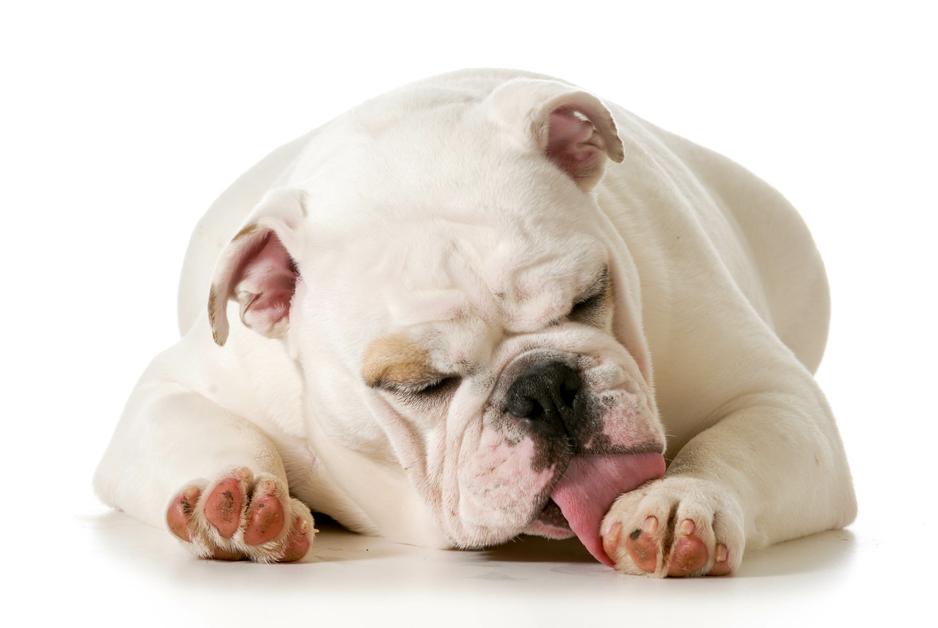

Diagnosis, Prevention and what to do if your dog has a broken nail or possible toe tumour
Has your dog ever had a broken nail? Not surprisingly, nail injuries are common in dogs. Sometimes they happen because they are too long, especially if your dog disagrees with you about whether or not their nails should be trimmed. I’m often asked how to cut dog’s nails, and some dogs (and people!) have a real fear of nail trimming. Similar to children, dogs have learned that a little bit of drama goes a long way when it comes to avoiding something they don’t like doing.
But regardless of whether or not your pooch is okay with a nail trim, dog nails are also susceptible to growths developing under the nail bed, which leads to separation of the nail that can resemble an injury.
Large breeds are more frequently affected. The first sign of a growth may be that your dog’s nail starts bleeding, which makes most people assume that their dogs were injured, but on closer examination a pink fleshy growth may be protruding from underneath or behind the nail.
This may not be as apparent in the early stage, however if a dog’s nail continues to bleed or looks detached, I suggest you go see your veterinarian right away.
How to stop your dog’s nail from bleeding
As I mentioned, broken nails in dogs and other nail injuries are common, and there is no need to think the worst when they happen. A torn toenail can be addressed by applying pressure to stop bleeding, then trimming the nail as short as possible without causing more trauma, and bandaging the paw with Vetrap and a piece of gauze that is saturated in Skin Spray (my herbal wound healing formula).
Here are two videos that explain how to cut your dog’s nails and wound healing:
Skin Spray not only speeds up the healing process, it helps prevent infection and reduces swelling and pain. I have had the chance to use it myself on cuts and it works well. The spray is all natural and made from four wound healing herbs. Learn more here.
If your dog’s nail doesn’t heal as expected, an exam should be done. If your vet suggests that there is a possibility of a tumour of the toe or nail bed, ideally, a histology sample should be taken to distinguish between a benign or a malignant growth. This should be done BEFORE a treatment decision is made. Recently, one of my friends had to put her dog through a toe amputation, and then a second surgery, because the diagnosis of the type of tumour was not established beforehand and the surgical margin was not wide enough.
I guess you may wonder why nail bed tumours appear in dogs.
For sure, genetic predisposition plays a role, however, similar to thyroid gland disorders, toe and nail bed tumours appear to be closely related to neck injuries that are more frequently seen in larger dogs.
Neck trauma can be caused either by falling, tumbling, or playing tug-of-war, however, the seemingly benign collars are the main cause of neck injuries, especially in dogs that pull on the leash. Persistent pressure caused by retractable leashes, jerks from applying the leash break, or just a pull because a dog wants to sniff something, all lead to chronic neck misalignment, nerve injury, and decreased energy flow to the feet.
To further clarify, restriction of energy flow in the neck affects the meridian lines corresponding with the feet. In simple terms, if a neck is injured, there is an increased likelihood of tumour formation.
Also, the fact that larger dogs are more affected is no coincidence because they’re stronger leash pullers, and are more likely to suffer from neck injuries.
TOE TUMOURS IN DOGS: PREVENTION
If you want to prevent nail bed tumours, the first thing you need to do is use a well fitted no-pull harness to prevent neck injuries. I know it is tempting to snap the leash on a collar for convenience, but I never do. It simply is not worth the risk.
Also, keeping nails as short as possible will reduce trauma and inflammation of the nail bed, which will decrease the likelihood of tumours. Watch the video posted above as many times as you need to learn how to cut your dog’s nails!
Another possible cause may be repeated contact with lawn pesticides that are carcinogenic. If you use them, live near a golf course, or walk in chemically treated parks, wash your dog’s feet with water after walking on treated lawns and stop using garden chemicals. I also suggest finding a safer dog walking location if possible.
Of course, an important part of every preventive program is healthy food and essential supplements to ensure your dog’s diet is balanced and the immune system is in optimal health. I give my dog Pax the Fab4 essentials. If you are not familiar with my Fab4 and want to learn more Click here.
© Dr. Peter Dobias, DVM